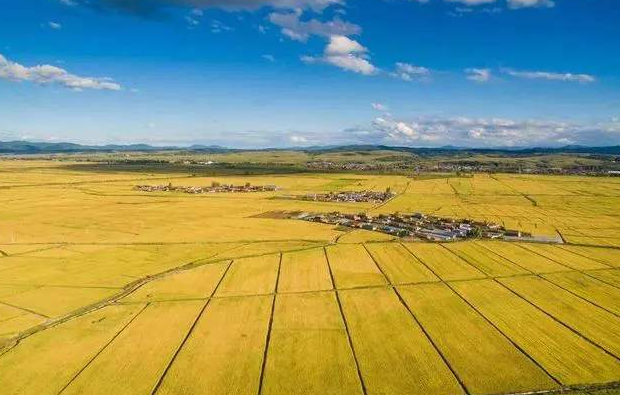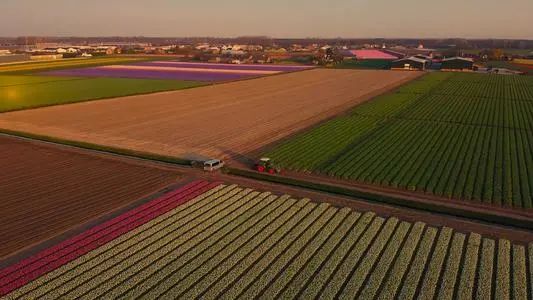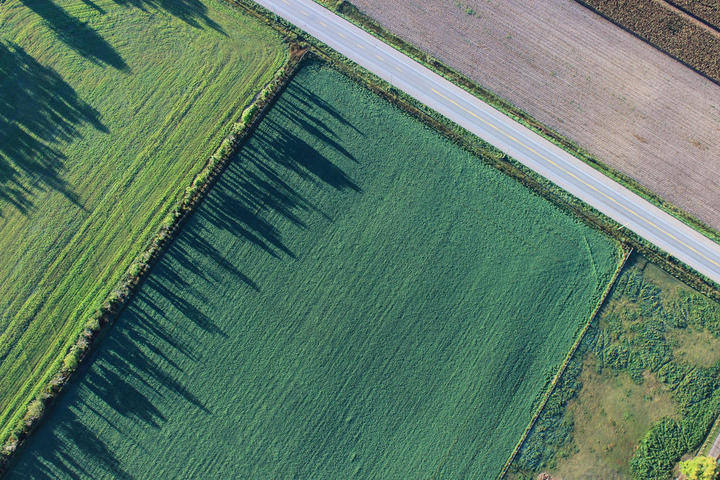


Looking at the global trend of agricultural development, almost every country and region is committed to modern agricultural construction. The difference is that developed countries are more focused on seizing the “commanding heights” and striving to continue to lead the trend of world agricultural development, while developing countries are more focused on learning from successful experiences based on their national conditions, striving to accelerate the pace of modern agricultural development and catch up. Today, let’s take a look at the modern agricultural models of various countries around the world.American Agriculture: The Big Farm ModelWhen it comes to American agriculture, we think of the big farm model.31.pngModern large-scale farms in the United States: a farmer cultivates thousands of acres of land; Spraying pesticides by aircraft; Using genetically modified technology to solve the problem of diseases, pests, and weeds; Planting a single crop in a county or even a state, and then transporting the produced agricultural products across the country and even around the world through long-distance transportation.In addition, agricultural production in the United States is highly developed and highly competitive. The personnel engaged in agricultural production account for less than 2% of the total population in the country, but they meet the food needs of 300 million Americans and are a major global grain exporter. The reason for this is that the United States has caught the early bus of modern agriculture.Japanese Agriculture: Fine Agriculture ModelJapan is located in the East Pacific Ocean, surrounded by the sea on all sides, with many mountains and less land, and relatively scattered cultivated land. Similar to agriculture in southern China, it is relatively small in scale. Small agricultural machinery is relatively popular in Japan, with convenient operation and low cost, but it can fully meet the demand.32.jpgSince 2003, the Japanese government has been implementing the “Emergency Development Plan for Next Generation Agricultural Machinery”. Vigorously promote 46 types of high-performance agricultural machinery, including fully automatic seedling transplanters, driving vegetable cultivators, harvesters, infrared dryers, belt packers, pesticide sprayers, etc.Generally speaking, farmers in Japan are specialized households. Those who grow strawberries grow strawberries, those who grow tomatoes grow tomatoes, and those who grow fresh flowers grow fresh flowers. Generally, farmers only produce 1-2 varieties throughout the year, with a maximum of 3 varieties, and the products produced are almost all commodities, resulting in a very high commodity rate of agricultural products.German Agriculture: digital agriculture ModelAs a highly developed industrial country, Germany’s agricultural production efficiency is very high. According to statistics from the German Farmers’ Federation, one farmer in Germany can support 150 people, and in the future, the goal of 300 people is still to be achieved.This goal needs more systematic and advanced technology and people time as support, which is the focus of the transformation of German agriculture from mechanical agriculture to “digital agriculture”.33.pngIn the promotion of digital agriculture, German agriculture also has specific requirements for the quality of practitioners.Becoming a farmer in Germany is not an easy task. Agricultural education and certification are necessary, and special positions require further education abroad.In addition to practitioners, it is to promote the implementation of “digital agriculture”.Germany has launched the “digital agriculture” solution, which can display various production information on the computer in real time, such as what kind of crops are planted on a certain land, how the crops receive light intensity, and the distribution of water and fertilizer in the soil. Farmers can optimize production based on this to increase production and income.Of course, the basic concept of “digital agriculture” in Germany is the same as that of “Industry 4.0”. Through the application of big data and cloud technology, the weather, soil, precipitation, temperature, geographical location and other data of a field are uploaded to the cloud, processed on the cloud platform, and then sent to intelligent large-scale agricultural machinery to command them to carry out fine operations.Dutch Agriculture: High tech Agricultural ModelThe influence of Dutch agriculture in the world.The Netherlands has a land area of 41864 square kilometers, which is only half of that of Chongqing in China. However, the agricultural and food exports of this small European country reached 29.28 billion US dollars, second only to the United States and France, with the total import and export volume ranking third in the world and net exports ranking first in the world. Flower production ranks first in the world, with an annual export of approximately 5 billion euros, accounting for 43% of the world market.34.jpgWe can’t help but wonder: why has the small Netherlands achieved so much? High-tech.Industry experts have also pointed out that Japan is a precision agriculture, the United States is a large-scale precision agriculture, and Israel is a high-tech agriculture with leading water-saving irrigation technology globally.The European country, the Netherlands, has agricultural characteristics similar to those of Israel and is a model of high-tech agriculture.Looking back 70 years, in the 1950s, with the strong support of the government, Dutch agriculture began its vigorous development path. After more than half a century of development and sedimentation, it has formed the current high-tech agricultural landscape, mainly reflected in glass greenhouse agriculture, horticulture and flowers, biological prevention and control technology, electronic information technology, and other aspects.According to statistics, the area of glass greenhouses in the Netherlands has reached 165000 acres, accounting for about 1/4 of the total greenhouse area in the world. The West Netherlands is the region with the most concentrated greenhouses. About 60% of glass greenhouses are used for flower production, while 40% are mainly used for the production of fruit and vegetable crops (mainly tomatoes, sweet peppers, and cucumbers).We also found that in terms of environmental control for glass greenhouses in the Netherlands, all automated controls have been implemented, including lighting systems, heating systems, liquid fertilizer irrigation and fertilization systems, carbon dioxide replenishment devices, and mechanized harvesting and monitoring systems. The comprehensive automation of glass greenhouses, coupled with advanced knowledge and technology, produces highly productive and high-quality crops, and produces agricultural products that are also exported to other countries.In addition to greenhouse technology, the Netherlands also has “cutting-edge” technologies such as biological prevention and control, detection technology, and big data application, which have helped Dutch agriculture become a world leader in agriculture.Israel: Precision Agriculture ModelIsrael has very scarce resources, with half of its land being desert and very limited arable land, resulting in a significant shortage of water resources. Israel’s agriculture is very developed, with a relatively high income for farmers, with an average annual income of 18000 US dollars per capita. One agricultural population can support 90100 people. And farmers’ dependence on subsidies is very low.35.pngIn addition, there is another data: Israel’s labor productivity is three times that of Japan, 12 times that of China, and 60% that of the United States (including seasonal farm workers). At the same time, the productivity of arable land is the highest in the world, reaching nearly five times that of the United States, which is more than one-third higher than Japan and China, known for their intensive cultivation!These proud achievements are all attributed to the unique precision agriculture development model of Selena Agriculture, which can keep pace with the United States in precision agriculture technology.French Agriculture: Cooperative Service ModelFrance has superior natural climate conditions and is suitable for the growth of various crops. It is the largest agricultural producer in the European Union and the second largest exporter of agricultural and food products in the world. Its agricultural specialization and technological level are in a leading position in the world.Many people think that leisure agriculture in France is very impressive, but the root cause is the success of France’s cooperative model.36.pngA blue book points out that France has 13000 agricultural cooperatives, 3800 agricultural cooperative enterprises, and 90% of farmers participate in cooperativesAlthough the forms of agricultural cooperation organizations in France are diverse and numerous, each organization has a clear functional positioning and carries a semi official color. Due to the flexible form of agricultural cooperative organizations, most of them are on the “front line” of communication with farmers, playing an indispensable role in the development of agriculture in France.At present, agricultural cooperatives have been integrated into various links of the French agricultural and food industry before, during, and after production. They are not only an important component of the French agricultural and food industry, but also play a decisive role in agricultural production, agricultural product processing and circulation, promotion of agricultural technology and machinery, and rural socialized services. They play a decisive role in agricultural education and training, agricultural credit and agricultural insurance Farmers’ social insurance and other aspects also play an important role.

No reply content